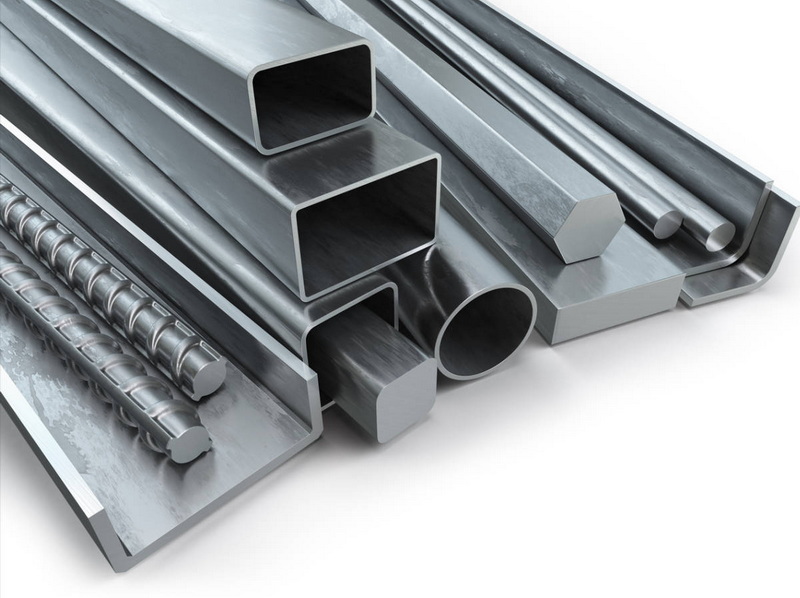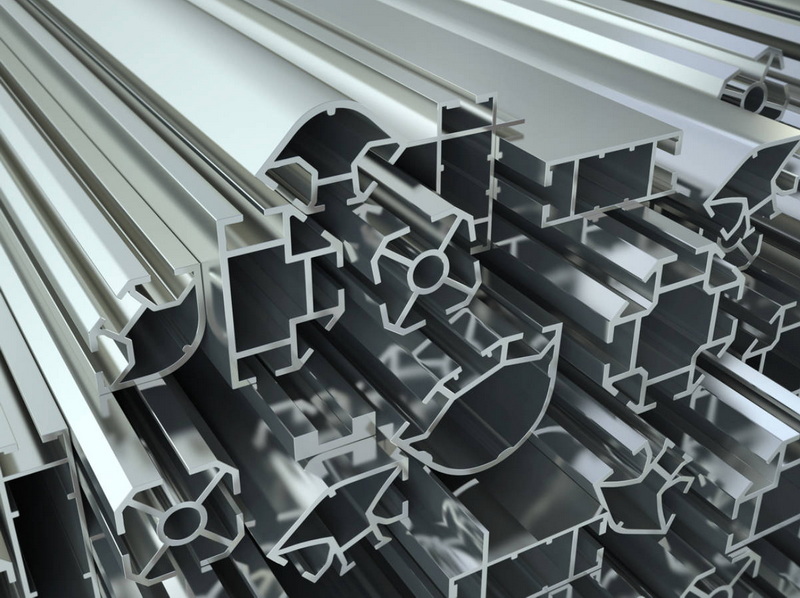English 




Views: 222 Author: Astin Publish Time: 2025-04-05 Origin: Site



Content Menu
● Introduction to Aluminum Angle Profiles
● Key Dimensions in Aluminum Angle Specifications
>> Leg Length
>> Thickness
>> Inside and Outside Corner Radii
● How Dimensions Affect Load Capacity
● Factors Influencing Load Capacity
● Applications of Aluminum Angles
● FAQ
>> 1. What are the typical dimensions of aluminum angle profiles?
>> 2. How does the thickness of an aluminum angle affect its load capacity?
>> 3. What role does the material grade play in the load capacity of aluminum angles?
>> 4. How does the method of support influence the load capacity of aluminum angles?
>> 5. What factors should be considered when calculating the load capacity of aluminum angles?
Aluminum angle profiles are widely used in various industries due to their versatility, lightweight nature, and impressive load-bearing capabilities. These profiles are formed by two perpendicular legs that meet at a right angle, creating a 90-degree angle. The unique geometry of aluminum angles allows them to be used in a variety of applications, from structural framing to decorative details. However, the dimensions of aluminum angle profiles significantly impact their load capacity, making it crucial to understand how different dimensions affect their performance.

Aluminum angles are L-shaped extrusions of aluminum, known for their strength, versatility, and lightweight nature. They are one of the most commonly used metal profiles in both commercial and industrial sectors, providing an essential building block for countless designs. The dimensions of an aluminum angle include the leg length, thickness, and corner radii, each playing a significant role in determining the profile's load-bearing capacity.
The leg length refers to the length of the two sides of the angle, which form the "L" shape. It is one of the most fundamental dimensions in aluminum angle specifications. Typically, leg lengths range from a few millimeters to several meters, depending on the needs of the application. For structural uses, leg length plays a significant role in load-bearing capacity. In general, the longer the leg length, the greater the strength and load capacity of the angle, but at the cost of added weight. Understanding this balance is essential when choosing the right size for specific requirements[4].
The thickness of an aluminum angle is the measurement of the material's thickness along its legs. This dimension directly impacts the strength and durability of the profile. Thicker aluminum angles can withstand higher loads and resist deformation more effectively. However, thicker profiles also weigh more and can be more difficult to work with. The ideal thickness depends on the nature of the application: heavy-duty structural applications require thicker angles, while lighter-duty uses may only require a modest thickness for sufficient performance[4].
The corner radii refer to the curved edges at the interior and exterior of the L-shaped angle. These radii are crucial in both aesthetic and functional terms. The inside corner radius is the rounded edge where the two legs of the angle meet, while the outside corner radius is the curvature on the opposite side. Smaller radii offer sharper angles, which may be desirable for certain aesthetic or structural requirements. Larger radii can increase strength by reducing stress concentrations at the corners, making the aluminum angle more resistant to cracking or bending[4].
The load-bearing capacity of aluminum angles is influenced by several factors, including the size of the profile, the material's alloy and temper, and the method of support. A larger cross-sectional area improves the load-bearing capacity, making thicker and wider profiles more suitable for heavy-duty applications[4][7]. The length of the profile also affects its load capacity; shorter profiles are generally more resistant to deflection and can support heavier loads than longer ones[7].
Calculating the load capacity of aluminum angles involves understanding the deformation under load. The deformation amount is typically calculated using formulas that consider the profile's length, load, elastic modulus, and moment of inertia. For instance, the allowable load values are often calculated assuming a specific deflection, such as 1/1000 of the profile length[2]. This method helps ensure that the load remains within safe limits to prevent excessive deformation or failure.
The material grade of aluminum angles plays a direct role in their strength and durability. Higher-grade alloys, like 7075, provide superior strength and are ideal for applications requiring high structural integrity. Meanwhile, alloys like 6061 offer a balance of strength and workability, making them suitable for a broad range of industrial and commercial uses[4].
The method of support significantly affects the load capacity of aluminum angles. Profiles supported at both ends can withstand more load than those fixed at one end. The type of load (static or dynamic) also impacts the load capacity, with dynamic loads generally requiring more robust designs to account for fluctuating forces[11].

Aluminum angles are used in numerous applications due to their versatility and strength. They are commonly found in structural framing, brackets, and trim in architectural projects. In industrial settings, they are used for machinery and equipment frames. The choice of aluminum angle size depends on the specific requirements of the application, ensuring that the selected profile meets the necessary strength and durability criteria[3][9].
In conclusion, the dimensions of aluminum angle profiles significantly affect their load capacity. Understanding the impact of leg length, thickness, and corner radii on load-bearing capacity is crucial for selecting the appropriate profile for specific applications. By considering these factors and calculating the deformation under load, designers and engineers can ensure that aluminum angles are used effectively and safely in a wide range of projects.

- Aluminum angles come in a variety of sizes, with leg lengths typically ranging from 0.5 inches to 8 inches and thicknesses from 1/16 inch to 1/2 inch[8]. Custom sizes can also be manufactured to meet specific project requirements.
- Thicker aluminum angles have a higher load capacity due to their increased cross-sectional area, which provides greater strength and resistance to deformation[4].
- The material grade affects the strength and durability of aluminum angles. Higher-grade alloys like 7075 offer superior strength, while alloys like 6061 provide a balance of strength and workability[4].
- The method of support significantly impacts load capacity. Profiles supported at both ends can handle more load than those fixed at one end, and dynamic loads require more robust designs[11].
- Factors to consider include the profile's dimensions, material grade, support conditions, and the type of load (static or dynamic). Calculations often involve deformation under load to ensure safe usage[11].
[1] https://www.linkedin.com/pulse/how-do-aluminum-profile-manufacturers-calculate-profiles-load-bearing-1ylbc
[2] https://www.pbalm.com/calculation-of-allowable-load-of-profile.php
[3] https://www.aluminiumwarehouse.co.uk/blogs/news/why-are-aluminium-angle-profiles-important
[4] https://www.alu-haomei.com/article/aluminum-angle-size-specifications-guide.html
[5] https://cut2sizemetals.com/products/aluminum-angle/
[6] https://lwaluminum.com/aluminum-angle/
[7] https://www.alutech-aluminium.com/how-much-weight-can-aluminum-angle-hold
[8] https://www.weiye-aluminium.com/what-are-the-standard-sizes-of-aluminum-profile-angle.html
[9] https://www.smetals.co.uk/assessing-the-strength-a-detailed-look-at-aluminium-angle-bars/
[10] https://www.mataluminum.com/news/how-do-aluminum-profile-manufacturers-calculate-the-profiles-load-bearing-capacity/
[11] https://www.tuli-shop.com/blog/aluminium-profile-load-capacity.html
[12] https://anglelock.com/blog/how-much-weight-can-aluminum-extrusion-hold/
[13] https://www.gj-alu.com/news/understanding-the-robustness-of-aluminium-profiles.html
[14] https://vention.io/resources/77/t-slot-aluminum-extrusion-structure-design-guide-77/download.pdf
[15] http://coastaluminum.com/wp-content/uploads/pdfs/09%20Aluminum%20Angle%206061%20American%20Standard.pdf
[16] https://www.mgmetals.co.uk/how-to-choose-the-right-aluminium-angle-for-your-project/
[17] https://www.aluminium-online.co.uk/aluminium/aluminium-angle/equal-angle/
[18] https://endura-steel.com/guide-to-aluminum-angles/
[19] https://www.capral.com.au/extrusion-plate-sheet/extrusion/angles-geometrics/angles/
[20] https://blog.naviewaluminium.com/blogs/aluminum-angle-profiles-key-considerations-for-choosing-the-right-material-for-your-project/
[21] https://www.alumeco.com/aluminium/profiles--tubes/angle-profile/en-aw-6082/75-x-75-x-8-mm/p/10001317/10004636
[22] https://www.gapengineering.com.au/blog/which-size-profile-is-the-right-one-for-my-project/
[23] https://www.alu4all.com/factors-affecting-dimensions-of-aluminum-formwork-profiles-in-extrusion-and-solution/
[24] https://www.alumeco.com/aluminium/profiles--tubes/angle-profile/g/20
[25] https://steelnow.com/blog/aluminum-angles-what-size-is-right
[26] https://www.alumeco.com/aluminium/profiles--tubes/angle-profile/en-aw-6082/30-x-30-x-3-mm/p/10001317/10006427
[27] https://www.jagdishmetalindia.com/blog/everything-you-need-to-know-about-aluminium-angle/
[28] https://www.linkedin.com/pulse/comprehensive-guide-aluminum-profiles-8ek4c
[29] https://jma-aluminum.com/2019/aluminum-angles.html
[30] https://edmolimited.co.uk/education/frequently-asked-questions/aluminium-extrusion/
[31] https://www.protocase.com/resources/tolerances/aluminum-angle.php
[32] https://www.xhalufactory.com/industry-knowledge/how-much-load-can-aluminum-extrusion-sustain-a-detailed-analysis/
[33] https://www.1stchoicemetals.co.uk/category/aluminium/angles-equal/
[34] https://www.aluminiumwarehouse.co.uk/products/1-1-2-in-x-1-1-2-in-x-1-8-in-aluminium-angle
[35] https://www.china-me.com/news/article/aluminum-profile-load-bearing-strength-verification-methods
[36] https://www.profall.com/en/aluminum-angle-sizes
[37] https://bitfab.parts/blog/what-are-the-sizes-of-aluminum-extrusion-profiles/
Top Aluminum Furnitures Manufacturers and Suppliers in Czech Republic
Top Aluminum Furnitures Manufacturers and Suppliers in Poland
Top Aluminum Furnitures Manufacturers and Suppliers in Belgium
Top Aluminum Furnitures Manufacturers and Suppliers in Finland
Top Aluminum Furnitures Manufacturers and Suppliers in Denmark
Top Aluminum Furnitures Manufacturers and Suppliers in Greece
Top Aluminum Furnitures Manufacturers and Suppliers in Portugal
Top Aluminum Furnitures Manufacturers and Suppliers in Austria
Top Aluminum Furnitures Manufacturers and Suppliers in Norway
Top Aluminum Furnitures Manufacturers and Suppliers in Sweden
